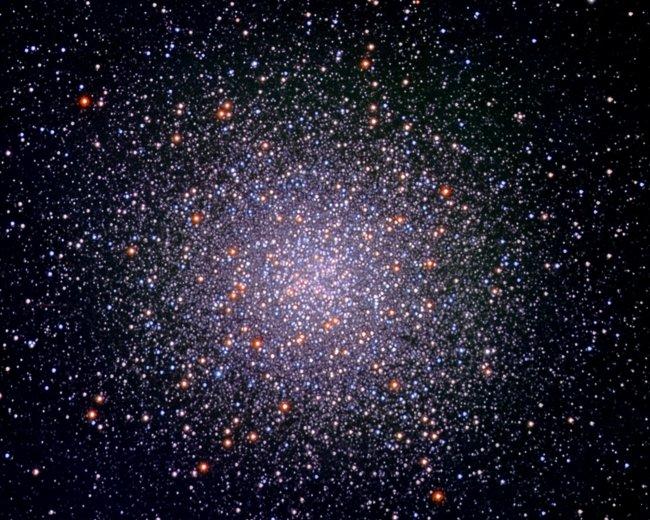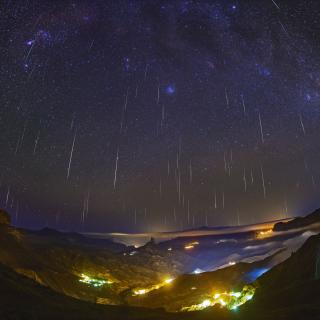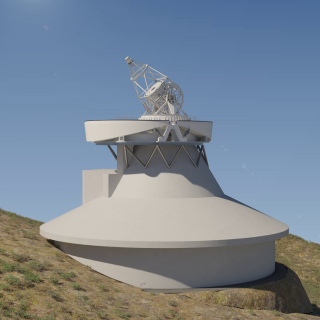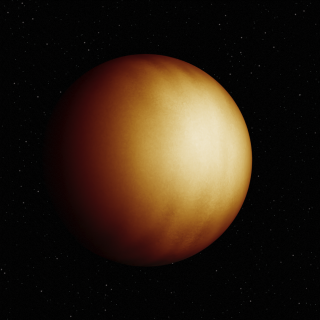The specialized Journal The Astrophysical Journal Letters (ApJL) is publishing today, in its on-line version, a study led by the Institute of Astrophysics of the Canaries (IAC) in which the researchers have identified a type of giant stars (AGB which means Asymptotic Giant Branch) of the second generation, and rich in aluminium, in four globular clusters with a range of metallicities and ages in the Milky Way. The detection of these stars on the giant branch of the well known Hertzsprung-Russell (HR) diagram is what is expected according to theoretical models of stellar evolution, and contradicts previous observations in this field.
The authors of this article are the IAC astrophysicists, Domingo Aníbal García-Hernández, Matteo Monelli y Olga Zamora, together with an international group of astronomers.
The researchers analyzed the abundance of aluminium in some ten globular clusters in the Milky Way, using near infrared spectra from the third phase of the Sloan Digital Sky Survey (SDSS-III), a project in which the IAC is a member. They were obtained with the APOGEE (Apache Point Observatory Galactic Evolution Experiment) instrument in the H band at 1.6 microns wavelength. Previous observations had been performed in the visible range, which is less reliable than the H band for determining the abundances of key elements, such as sodium.
The method consisted of combining the abundances of aluminium obtained in the ten globular clusters with very precise photometry to identify the AGB stars, the red giants, and the horizontal branch. They did this using colour-magnitude diagrams (a form of HR diagram) which relate the temperature and the luminosity of a star, whose position on the diagram depends mainly on its mass and age.
Domingo Aníbal García-Hernández, a researcher at the IAC and first author of the paper explains that “ previous studies indicated that second generation stars did not pass through the AGB phase” and added that “This was a problem for models of stellar evolution and of the evolution of globular clusters”.
A recent controversy
Historically globular clusters have been used to study stellar evolution because it was believed that all of its component stars had formed at the same time, and so had the same age. However several decades ago it was discovered that almost all the globular clusters studied had several stellar populations. In the first generation aluminium and sodium are not abundant, while in the second generation, formed later the stars are enriched in those chemical elements “contaminated” by the previous generation. “Because of this” explains Matteo Monelli, “studying chemical abundances can let us determine to which generation a given star belongs”.
In studies previous to that now published in ApJL two generations of stars had been detected at different stages of their evolution: on the main sequence, on the horizontal branch, on the subgiant branch, and on the red giant branch, but not at later stages such as the asymptotic giant branch (AGB), where all the stars studied had shown the chemical pattern of first generation objects. In other words they were poor in sodium and aluminium.
The debate came alive again when, in 2013 Campbell and co-workers (see More information) proposed in an article in Nature that second generation stars did not reach the AGB. This could be caused, they argued, by major mass-loss on the horizontal branch. That scenario implied that the theoretical models of stellar evolution were wrong. “The detection of second generation AGB stars in several clusters, one of them virtually the twin of the cluster studied by Campbell and co-workers, definitely puts an end to the question “ says Olga Zamora.
The research published in ApJL can also help to elucidate the type of stars which “contaminate” the second generation. Various candidates which might release sodium and aluminium into the interstellar medium have been proposed: massive AGB stars, very massive rapidly rotating stars (spin stars, supernovae…) or very massive interacting binaries. The fact that the second generation AGB stars had not been detected favoured the model with spin-stars, but the new results change this.
“We still don’t know” concludes Domingo Aníbal García-Hernández “ how the globular clusters formed and evolved in the early universe. The nature of the contaminating stars which affect the different stellar generations in these fascinating system is the main subject to resolve at the present time. It remains open.”
Reference
“Clear evidence for the presence of second-generation asymptotic giant branch stars in metal-poor Galactic globular clusters”, by D. A. García-Hernández, Sz. Mészáros, M. Monelli, S. Cassisi, P. B. Stetson, O. Zamora, M. Shetrone y S. Lucatello. 2015, ApJ, 815, L4.
Link: http://iopscience.iop.org/article/10.1088/2041-8205/815/1/L4
astro-ph: http://arxiv.org/abs/1511.05714
More information
“Sodium content as a predictor of the advanced evolution of globular cluster stars” by Simon Campbell et al.
A low sodium diet, key to stellar longevity
CONTACT:
Domingo Aníbal García-Hernández: agarcia [at] iac.es (agarcia[at]iac[dot]es); Tlf: 922605375
Olga Zamora: ozamora [at] iac.es (ozamora[at]iac[dot]es); Tlf: 922605502




